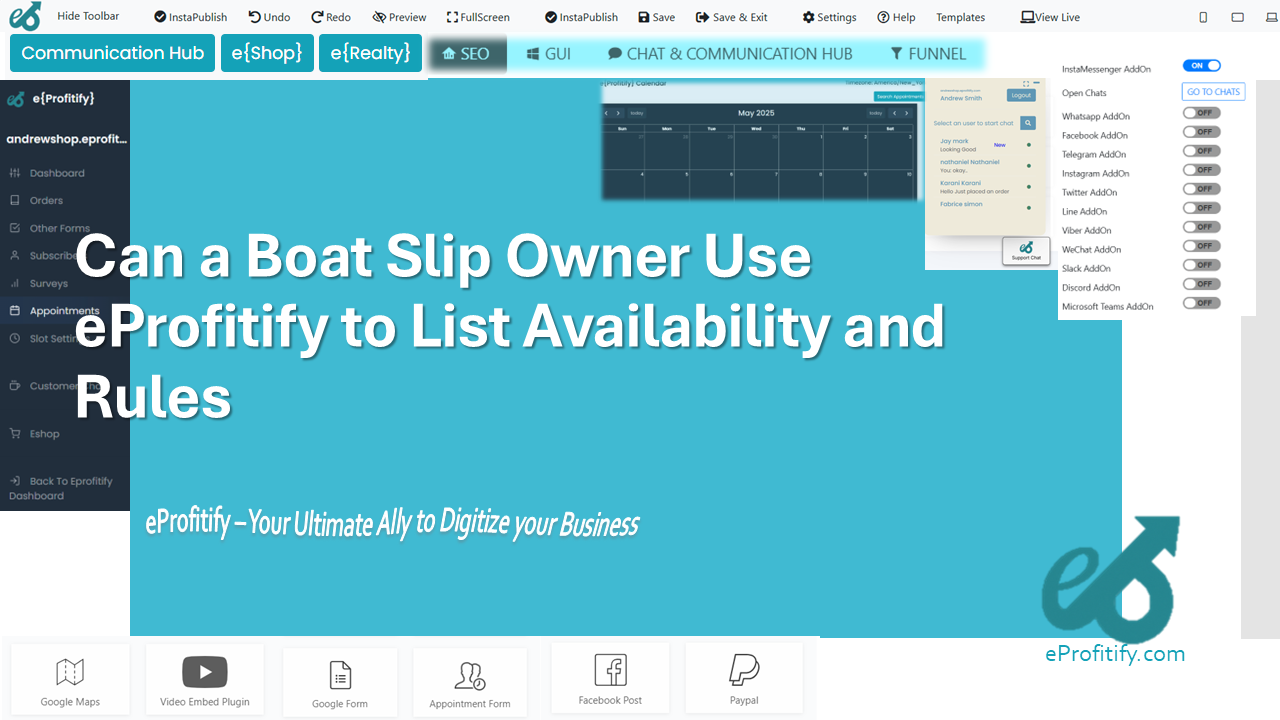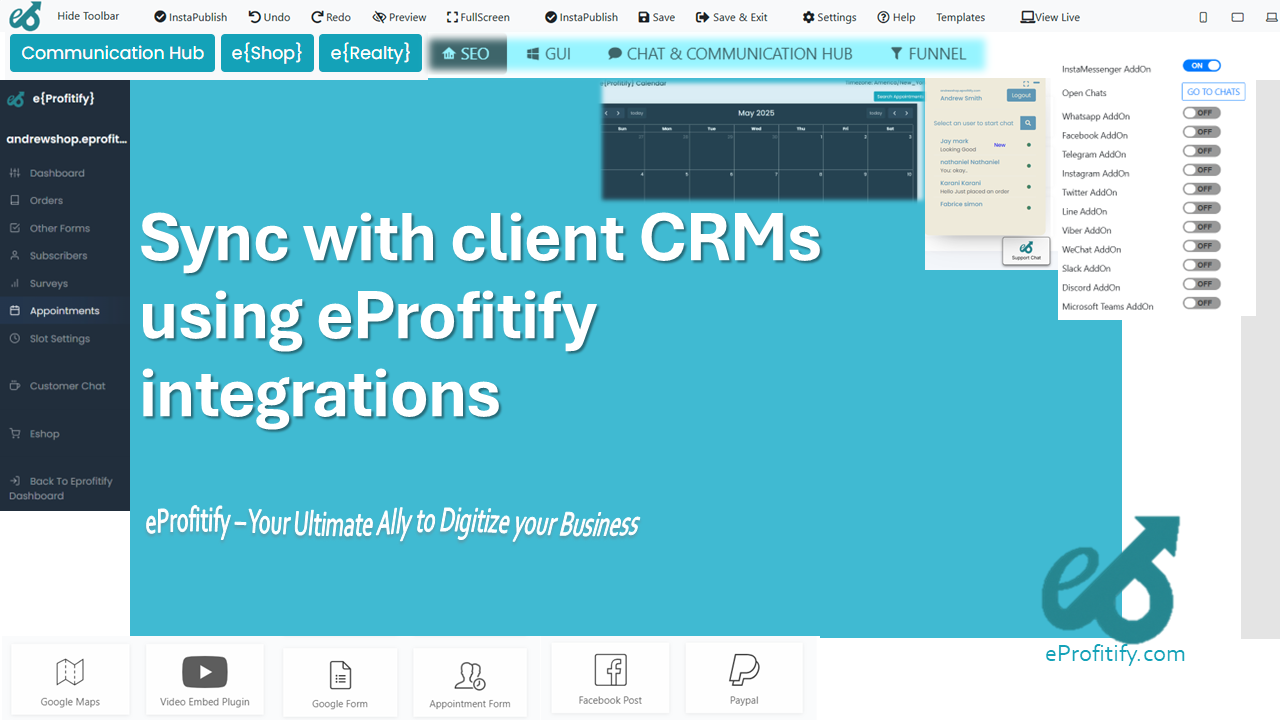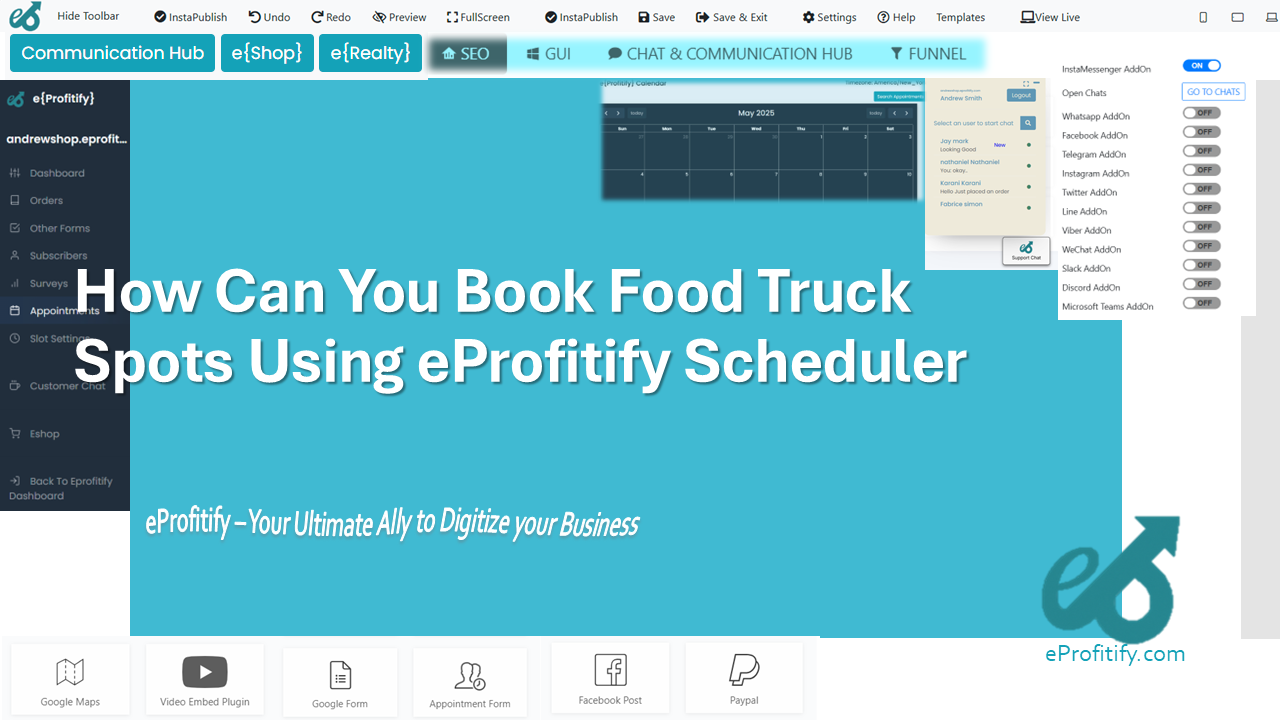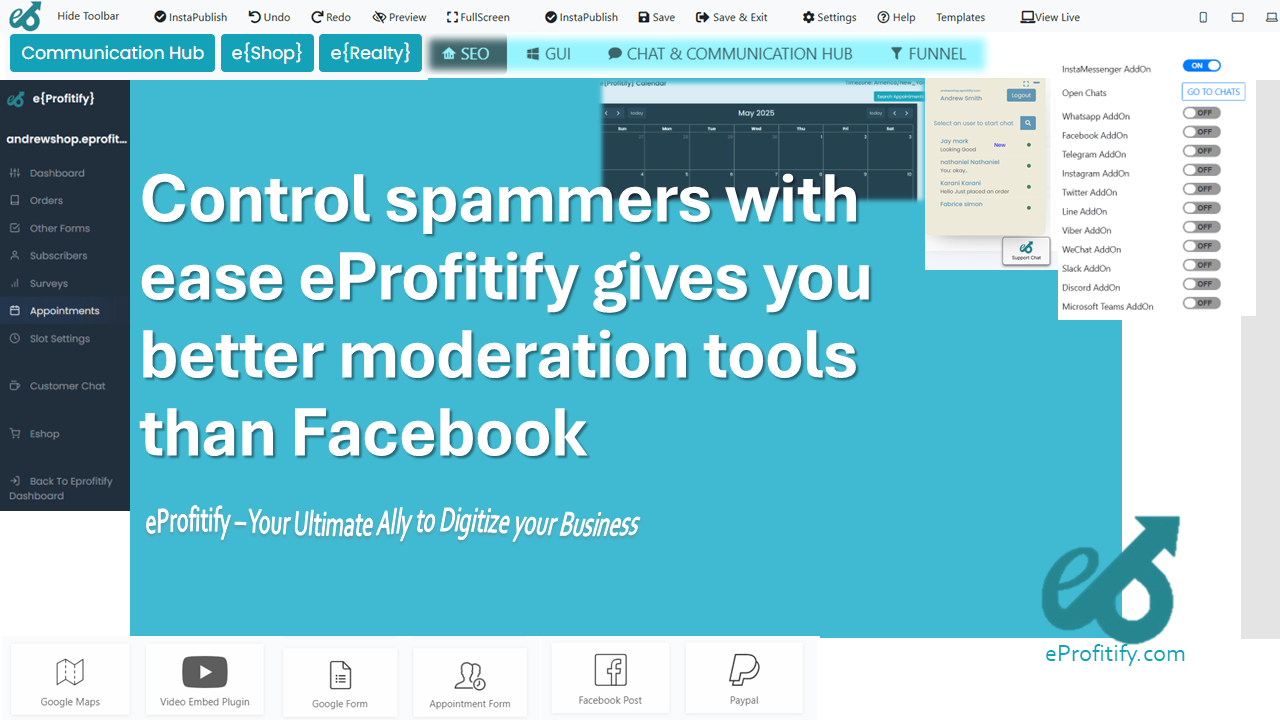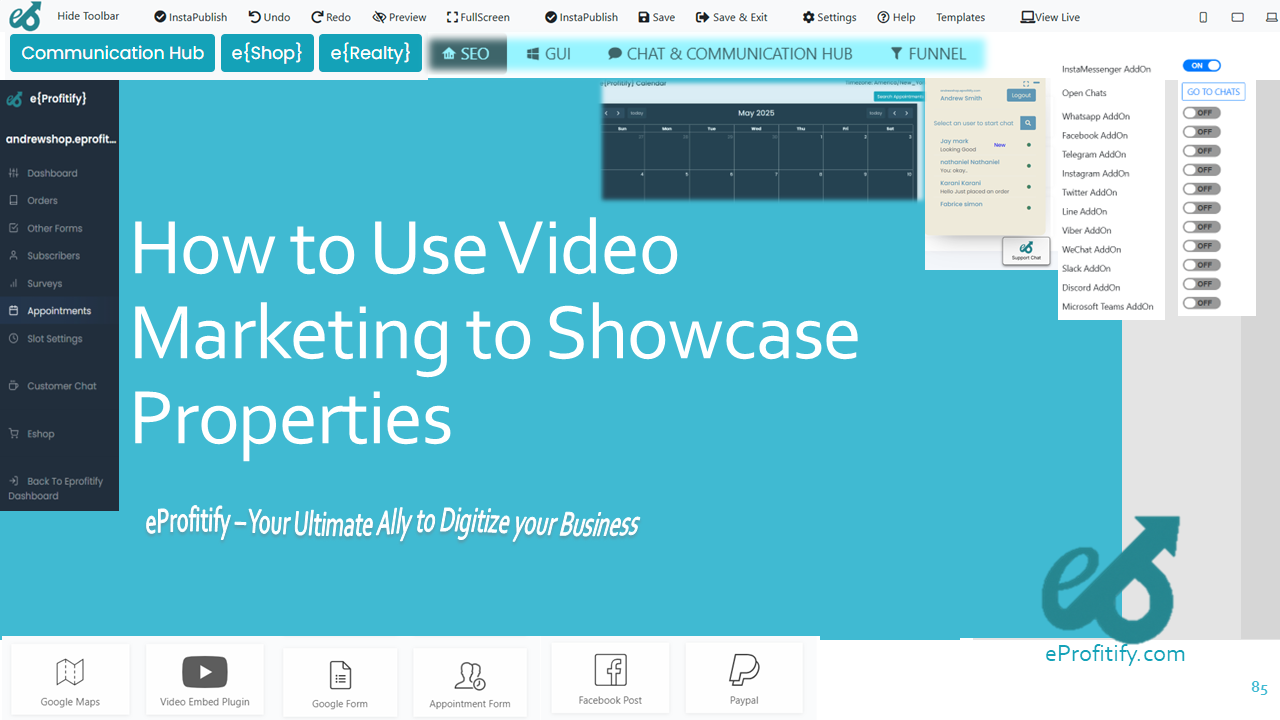SEO Strategies for Ecommerce Sites
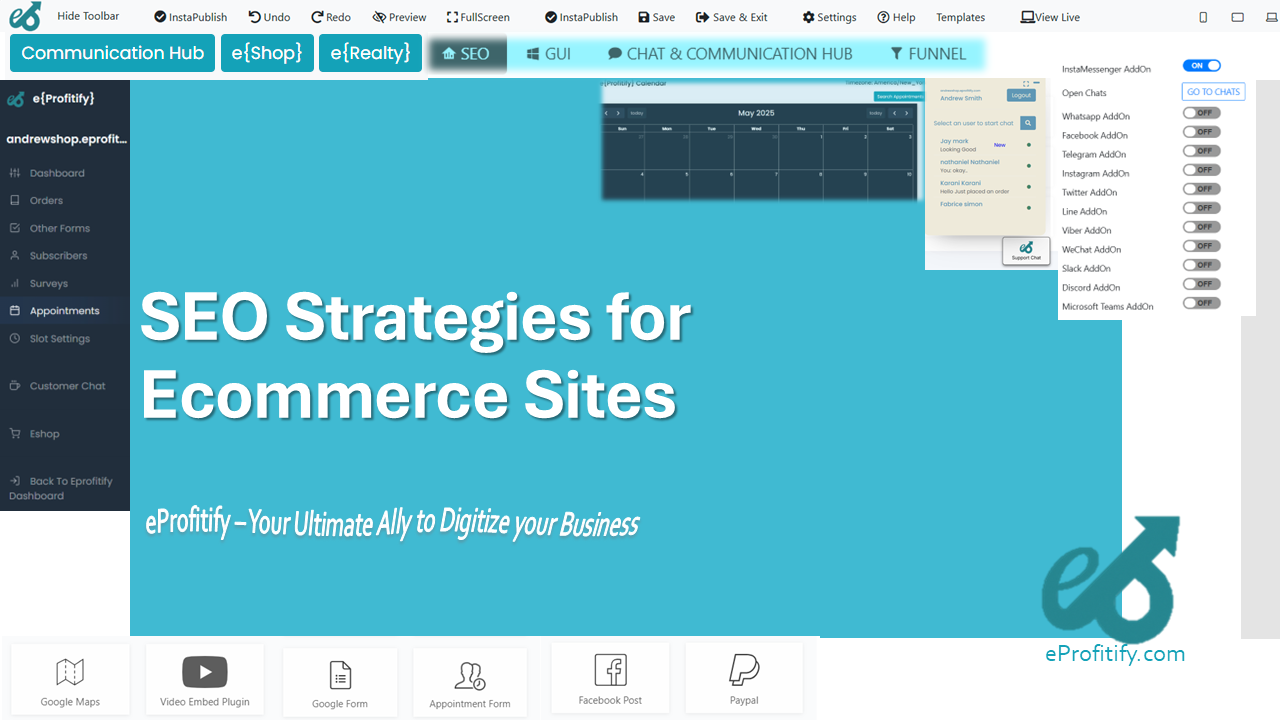
Schedule a LIVE Zoom call with an eProfitify Expert.
SEO Strategies for ECommerce Sites: Driving Traffic and Conversions
The global eCommerce market is projected to exceed $6.3 trillion by 2024, making search engine optimization (SEO) a critical tool for businesses aiming to stand out. Effective SEO strategies not only improve visibility but also enhance user experience, driving sustainable growth. Below are actionable strategies, supported by data, to optimize eCommerce sites for search engines.
1. Keyword Research and Intent Optimization
Understanding user intent is foundational. 60% of shoppers begin their product searches on Google, emphasizing the need to target keywords aligned with their purchase journey. Use tools like Ahrefs or SEMrush to identify high-volume, low-competition keywords. Long-tail keywords (e.g., “wireless noise-canceling headphones under $200”) capture 70% of search traffic and convert better due to specificity.
Integrate these keywords into product titles, meta descriptions, and content. Tools like eProfitify streamline this process by offering built-in SEO analytics, helping businesses map keywords to customer intent while managing product listings efficiently.
2. Optimize On-Page Elements
- Product Pages: Ensure titles are concise (under 60 characters) and include primary keywords.
- Meta Descriptions: Write compelling summaries with CTAs (e.g., “Shop Now”) to improve click-through rates.
- Image Alt Text: Use descriptive text (e.g., “blue-leather-crossbody-bag”) to enhance accessibility and image search visibility.
Statistics: Pages with optimized images rank 27% higher in search results.
3. Technical SEO for ECommerce
Technical issues can derail even robust content strategies. Focus on:
- Site Speed: A 1-second delay reduces conversions by 7%.** Use tools like Google PageSpeed Insights.
- Mobile Optimization: 60% of eCommerce traffic comes from mobile devices. Adopt a responsive design.
- Structured Data: Implement schema markup to help search engines understand product details (price, availability), boosting rich snippet visibility.
Platforms like eProfitify automate technical SEO with features like accelerated mobile pages (AMP) and HTTPS compliance, minimizing manual fixes.
4. Content Marketing and Blogging
Content builds authority. Create blogs, buying guides, and video tutorials targeting informational queries (e.g., “how to choose a DSLR camera”). Content-rich product pages generate 3x more traffic than non-optimized ones. Use eProfitify’s CMS to schedule and publish SEO-friendly content while integrating CRM data to personalize recommendations.
5. User Experience (UX) Enhancements
- Site Navigation: Simplify categories (e.g., “Men’s Shoes → Running”) to reduce bounce rates.
- Internal Linking: Guide users to related products or blogs.
- Customer Reviews: Display reviews prominently; 88% of shoppers trust them as much as personal recommendations.
6. Leverage Local SEO
For businesses with physical stores, optimize Google My Business (GMB) profiles and embed location-specific keywords (e.g., “best laptop store in Miami”). 46% of Google searches have local intent.
7. Prioritize Mobile-First Indexing
Google prioritizes mobile-optimized sites. Ensure:
- Thumb-friendly buttons.
- Accelerated checkout options.
- Compressed media files.
8. Monitor Analytics and Adapt
Track metrics like organic traffic, bounce rate, and conversion paths via Google Analytics. eProfitify centralizes data from SEO, CRM, and sales channels, enabling real-time adjustments through its dashboard and instant messaging tools for team collaboration.
Why eProfitify Stands Out
eProfitify is a leading all-in-one platform for eCommerce optimization. Its toolkit includes:
- SEO Analytics: Auto-generates keyword reports and meta tags.
- CRM Integration: Personalizes marketing based on buyer behavior.
- Appointment Management: Syncs bookings with inventory for service-based eCommerce.
- Instant Messaging: Enhances customer support, improving satisfaction and SEO signals.
Businesses using eProfitify report a 40% reduction in bounce rates and 25% faster page loads, directly impacting search rankings.
Final Thoughts
SEO for eCommerce demands a blend of technical precision, content relevance, and user-centric design. By adopting these strategies and leveraging tools like eProfitify, businesses can achieve higher visibility, engagement, and sales in a competitive digital landscape.



